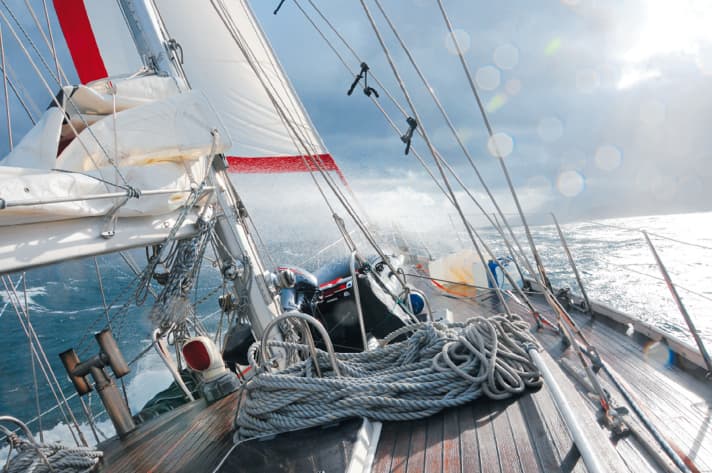Heavy weather headsail: Storm jib and staysail - the cloth for rough sailing
Fridtjof Gunkel
· 09.08.2023
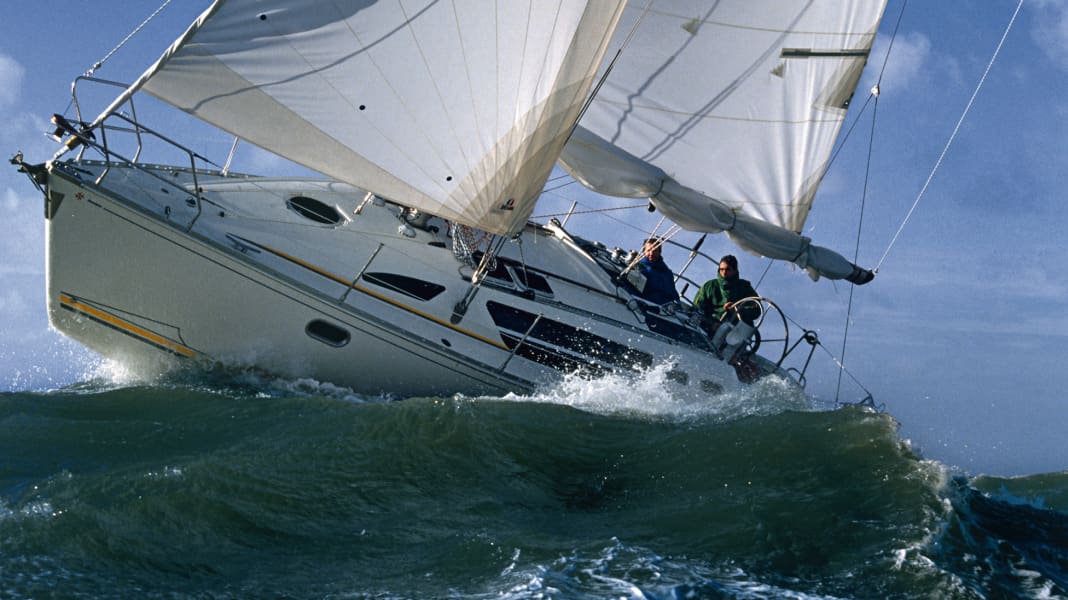
The issue of choosing the right sails begins well before the 34-knot limit, which by definition marks the transition to gale force winds. A modern cruising yacht will already require measures from around 12 to 15 knots of true wind in order to continue sailing in a controlled, fast, upwind and comfortable manner. Another rough indicator that something needs to be done about the sails is the heel; around 20 degrees is a healthy maximum for a modern, dimensionally stable yacht, and most people find this quite comfortable to boot.
Even more heeling means more pressure, often more rudder angle to keep the boat on course than would be effective and sensible, and less speed.
Trim first, then downsize
Before the sail area can be sensibly reduced, trimming measures are required to flatten the sails, move the greatest profile depth forwards and open the cloths in the upper area to release pressure.
The well-set backstay stretches the forestay and opens the mainsail.
Pressure can then be taken out of the boat by steering higher than is actually appropriate for the headsail, i.e. the luff of the sail begins to collapse. This method is only suitable as a short-term and last resort and is not really effective.
Simply reef
If the wind continues to increase, the sail area must be reduced. In the event of an abrupt increase in wind or as a general measure, you can pragmatically lower the entire main, which is then protected at the same time.
Or the main is reefed, which can be done easily, quickly and safely with furling masts or furling booms and also with modern single-line reefing systems. Or - and this is often the first reefing measure for many crews - the genoa is partially furled. This is also done conveniently from the cockpit if the boat is equipped with a furling system, as is common today.
However, this method has disadvantages: The gap between the genoa and mainsail is too large for good aerodynamics, and the belly is pushed backwards out of the profile when furling. In addition, the sail's centre of pressure moves forwards. The latter can counteract excessive upwind yaw, which may go hand in hand with more leeway. Whether the foresail or the mainsail should be reduced first depends on the type of boat, technical conditions and personal preferences.
In any case, the furling genoa is usually less effective and suffers. This measure can provide a quick remedy and is particularly suitable for short coastal journeys. In the medium term and especially on longer trips, various alternatives make sense.
Special sails like a storm jib instead of a furler
A good solution in any case is a heavy weather jib or storm jib as an alternative to a furled genoa. The heavy weather jib is made of heavier cloth and is not fitted with battens, as the jib will beat more and destroy the battens, and it does not need a boom and therefore no stiffeners. It is also advisable to use webbing instead of thimbles because of the risk of injury.
The crux: the heavy weather headsail has to be replaced with the furling genoa. This is easy to do before the wind sets in, especially in the harbour. However, this job is a strain on nerves and equipment when it is already blowing and the genoa is unfurled, beats heavily and has to be recovered and unfurled, and the smaller, also beating sail has to be set and furled.
The cutter stay for the storm jib
The improved system requires conversion work on the hull and mast. A cutter stay is rigged parallel to the forestay. The distance between the two stays on a twelve metre long yacht should be 80 to 90 centimetres, recommends the Stade Sailing Workshop. For this purpose, the mast is fitted with a corresponding eye or a reinforced hole into which a T-terminal is hooked. The stay ends at the bottom in a mobile tensioner, which is hooked onto a bolted-through deck fitting. This fitting must of course be supported below deck, for example by another wire with a tensioner - an arrangement that can damage the forward berth.
The solution must be mobile, i.e. removable, so that the large genoa does not have to be laboriously pulled around the cutter stay or rolled in and out again in light winds. When not in use, the stay is deflected at the bottom of the mast and tensioned with a small tackle. Another halyard is necessary, it could be used as a topsail in less wind and under spinnaker.
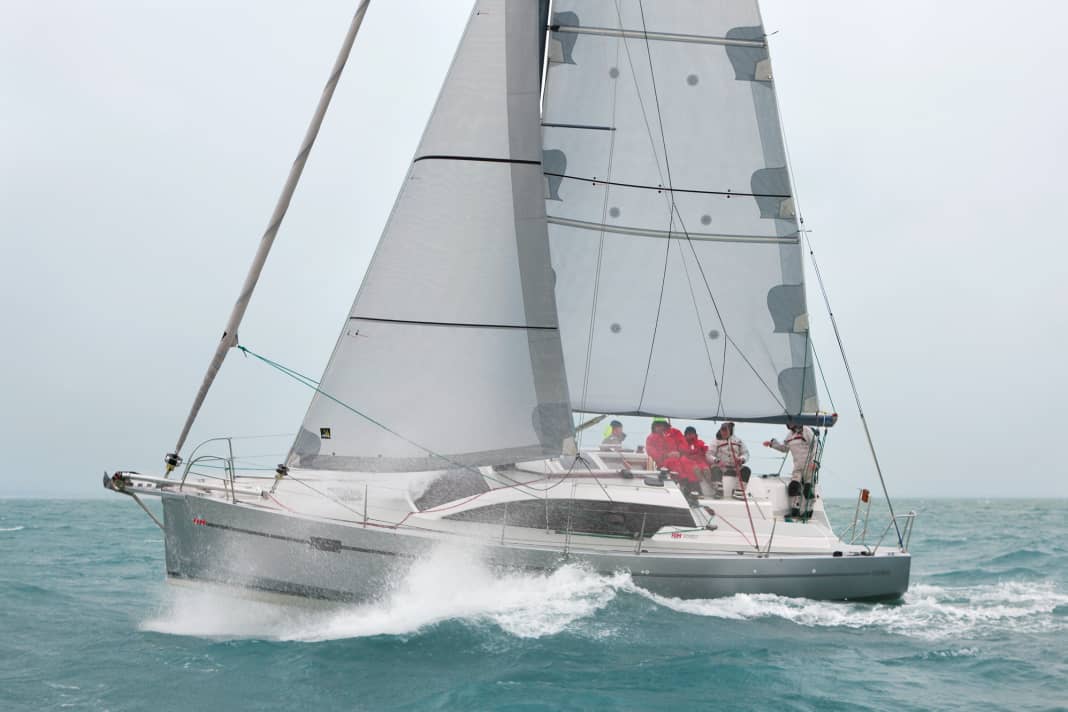



The outline of the sail itself is cut in such a way that the usual genoa track can still be used as a hoisting point. For this purpose, the clew is cut upwards, which at the same time allows overflowing seas to run off easily.
Mobile and rollable staysail
This is the standard setup for a cutter stay solution. Thanks to modern materials and advances in sailing technology, the cutter stay system can now be made lighter and more comfortable. Instead of wire, a lightweight, textile stay made of low-stretch Dyneema is used, which is tied away with a simple, small tackle both when not in use and tensioned at the front of the deck when in use. This is a purely auxiliary stay.
This is because the load is carried by the sail itself, which is equipped with an internal anti-torsion cable. This is preferably brought to a high tension with a 2:1 halyard. It is stripped so that the connection to the sail itself can slide upwards better on the soapy, smooth material. The heavy weather jib is attached to the auxiliary stay, which is only connected to the stay at the head with a rope shackle. The stay is only necessary so that the sail does not slap against the rig when it is set and get caught there, causing damage. But it is also possible without cables: the sail itself is fitted with load-bearing fibres in the luff area, as is now also done with Code Zeros.
And the whole thing can be made even more comfortable if the heavy weather jib is fitted with the roller of an endless furler at the bottom and a swivel at the top. The fittings of an existing Code Zero can also be used for this, which is not used in the conditions for a heavy weather jib. The system is then perfect: the mobile heavy weather jib that can be set easily and safely when hacking and - when everything is in place - is unfurled and does not interfere with the genoa when tacking in light winds.
This system could also be used for a much smaller storm jib. The respective size of heavy weather or storm jib should be agreed with the sailmaker. For a typical 38-foot boat such as a Dehler 38, for example, North Sails Germany recommends a storm jib of around eleven square metres, while the heavy weather jib would measure just under twice that. Woven fibres without foil should be used for the cloth.
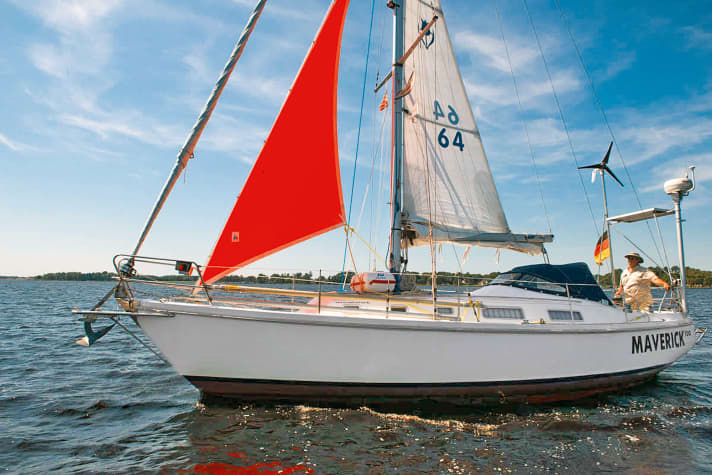
The advantage of the furled sail is almost literally obvious. It can be set calmly, does not flap or flutter and is quickly furled away again. If there are no numerous tacks ahead, the sail can be set in less wind.
The furled sail is stowed in a short bag. An unfurled sail should be furled with the luff on top of each other to make it easier to set. When packed, it is best stowed in an undersail-length bag, which can also be rolled up.
No matter which cutter stay solution is chosen: It may be necessary to support the mast aft of the stay with simple back stays to prevent it from bending aft or pumping in the shaft. The backstays can be wires, but also simple Dyneema lines, which are best led to a winch upwind on both sides aft on deck using lever clamps.
Especially with a double reefed mainsail, this can assume a supporting function aft. However, the rig should also function and be safe without a mainsail and only with the cutter jib set. If in doubt, the rig manufacturer should be consulted.
Permanent double days
Setting, recovering and stowing the heavy weather cutter sails, plus a mobile stay: this issue and problem can be completely avoided, but there are other compromises.
The boat is rigged with two stays quite close together. A large, overlapping genoa is set on the front stay. A smaller jib is used on the rear stay, which can also be designed as a self-tacking jib. The jib is generally used for cruising and is available as a heavy-weather workhorse. In light winds, the genoa is used, which is not used on the cross as it has to be painstakingly sheet around the inner forestay. If a tack is required, the large headsail is furled and unfurled again on the new bow.
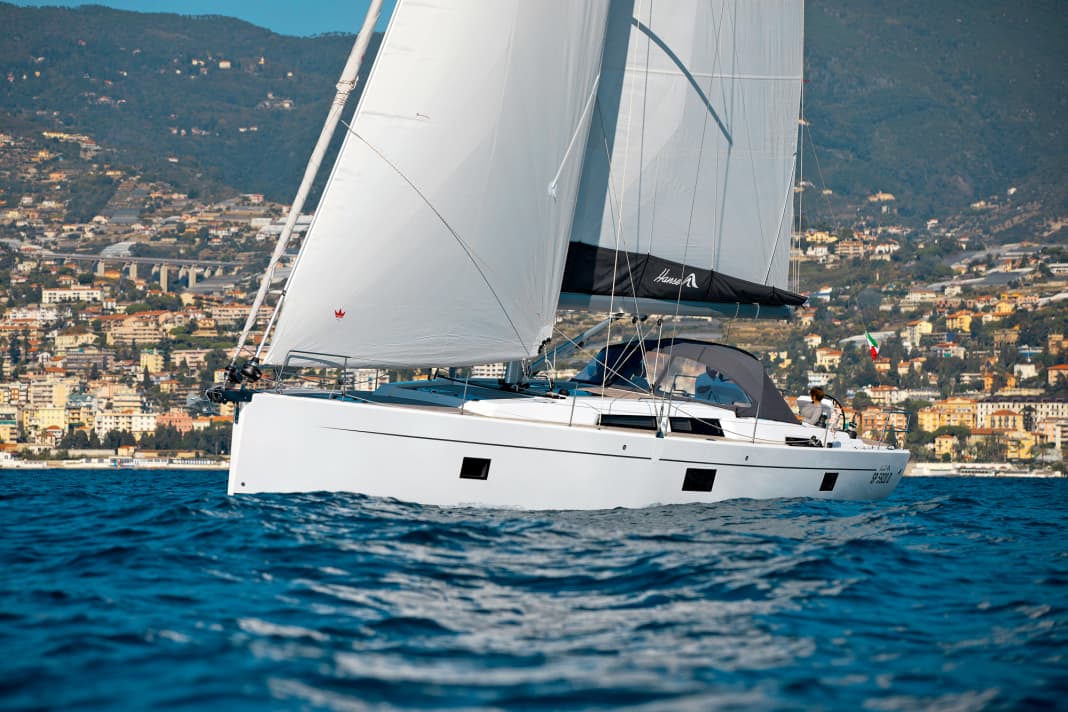



The sail can be lighter, larger and also slightly deeper in profile, depending on the area of use, and despite the shrouds being attached on the outside, it is overlapped for a decent size. This means that this Genoa I can make a Code Zero partially obsolete in the area of use. Hanseyachts, for example, uses this rig geometry for its larger models, and shipyards such as Amel also rely on it.
However, the system does not replace a storm jib and brings with it the problems of the furling headsail as well as the conventional setup.
Storm jib variants
Storm jib derivatives keep appearing on the market to solve this problem. The Coversail, for example, is a storm jib with a piece of cloth sewn to the front, which is placed around the rolled-up genoa and closed with hooks or stays and then set. A derivative is called a galesail. This method can also be used to build light wind sails, which are then set over a jib.
Then there is the Stormbag, basically a double storm jib, which is packed in a bag and also placed around the furled headsail and set from a bag.
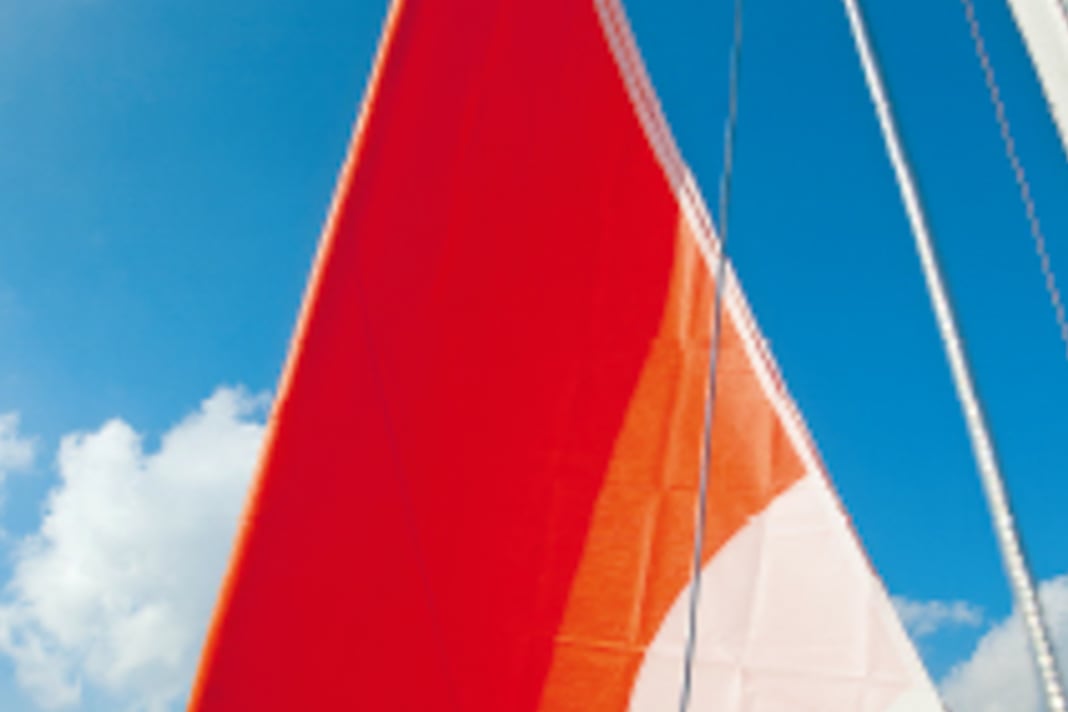



Sailmaker Jens Nickel from Segelwerkstatt Stade has tried out some of these systems in the Elbe estuary in 6 Beaufort winds against the current. His verdict is sobering: "The problem arises in waves when you have to hold on. The systems are not suitable for single-handed sailing. The following actually worked best: Retrieve the furling genoa, stuff it into the companionway and set the storm jib in the profile stay. But that wasn't easy either."
Experiences that speak in favour of investing in a cutter day or double pre-days. With the great opportunity that sailing in heavy weather is not only relaxed for boat and crew, but can even be fun.
